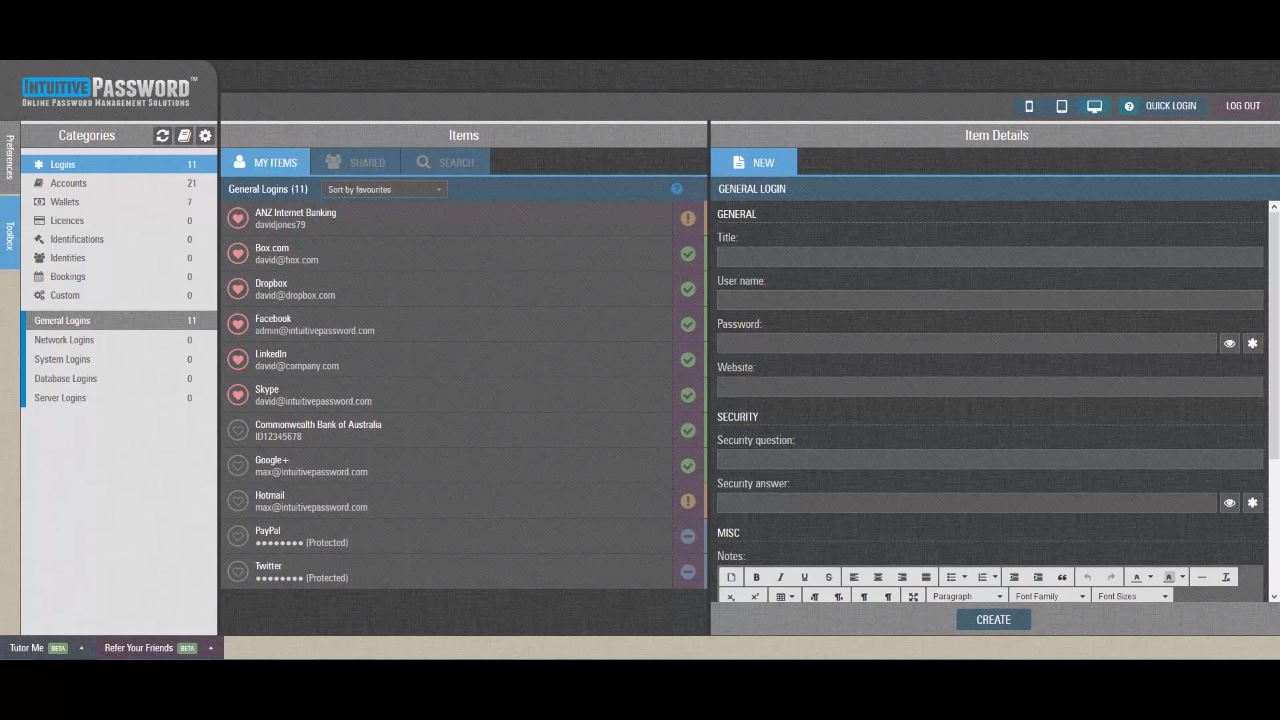
When on the go, better sync your keepass file to your smartphone and use e.g.
#Keeweb overview password#
This is similar with keepass, but again, keeweb is for the use case where this is not your system! Moreover, keepass for windows offers a “secure desktop” where you enter your master password which cannot be accessed by (off-the-shelf) keyloggers, keeweb doesn’t). – the system you use (for example keyloggers can sniff your master password.

– the browser you use (especially, keeweb is made for the use case when you are not at your own pc, so this is the browser of someone else, with a bunch of extensions installed and probably outdated). you need to trust the CA-system… or use cert-pinning) – the network connection between your system and the server (man-in-the-middle might replace keeweb with an infected version), or properly setup SSL (i.e. If keeweb is on dropbox, then you need to trust them. – the server that keeweb is stored on (an attacker might replace keeweb with some infected version on the server). If you use keeweb, you additionally need to trust: You need to trust your end devices anyway, as they are the place were you decrypt you keepass database. This means you only need to trust your end devices, not the server. You can secure your keepass file with a key-file that you don’t put into the cloud, making it really really hard for someone to brute-force if he gets access to your cloud storage. The good thing about keepass is that you can sync your passwords across devices through some cloud service like dropbox or owncloud without the need to trust the cloud service. Now You: Would you use a service like KeeWeb? The author promises that the app contains no statistics or analytics scripts or advertisement.
#Keeweb overview code#
Since it is open source, you can audit the code to make sure of that. The remote version of KeeWeb makes no external requests, uses only locally stored data and makes only one network connection to check for updates which users can disable in the app settings. KeeWeb is something that I will keep an eye on definitely to see if creating your own self-hosted version of the application improves or is made clearer on the project website so that anyone with a Dropbox account but no knowledge of scripting or programming languages or Dropbox application creation can set it up on their own.

I have no need for that, and won't use a service hosted by a third-party to open my KeePass database either.Ī self-hosted web version of KeePass on the other hand, that is open source, and easy to set up, should have appeal to users of the application. Obviously this looks like user error, but the same database password/keyx combo works in Windows.The desktop applications are cross-platform which may have some appeal to users of KeePass. I'm using the UI so I don't have exact commands to show but here is the process:

keyx generated in Windows won't work in Ubuntu? I believe the files should be cross-platform. I can confirm the file is not corrupted as I can open after the error in Windows and am certain the password/keyfile are correct.Īlso, I can open a different shared. In KeePassXC I get a an invalid credentials error which states that if this reoccurs the file may be corrupted KeeWeb just refuses to open it. However, on Ubuntu 20.04, which is a dual boot with the Windows machine and the databse is stored in a shared mount, I am unable to unlock.
#Keeweb overview mac#
I'm able to open the database on Windows (KeePass2) or Mac (strongbox). keyx) that was created with KeePass2 on Windows.


 0 kommentar(er)
0 kommentar(er)
